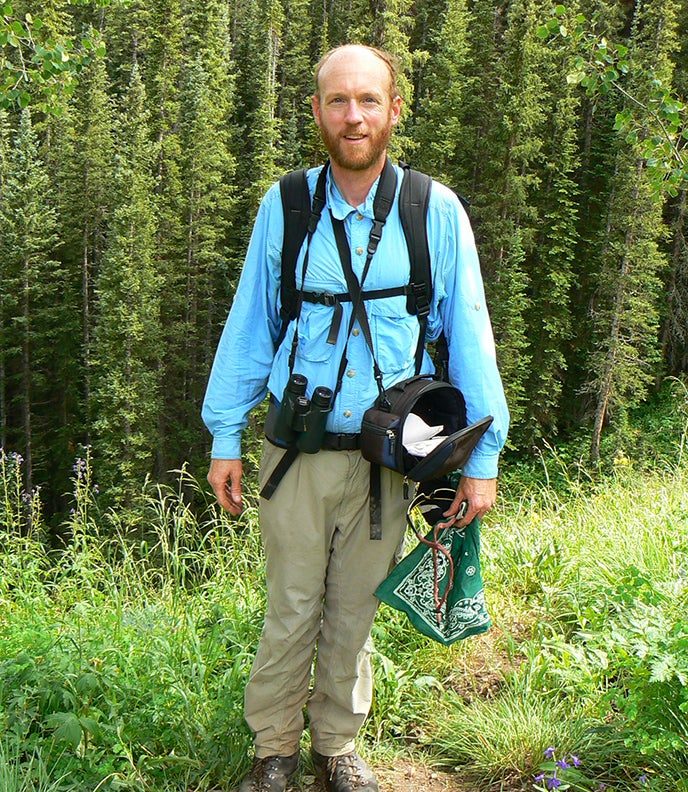KINGSTON, R.I. – December 19, 2016 – University of Rhode Island Associate Professor Chris Floyd has long been interested in the ecology of island populations of wildlife. But until he arrived in Kingston this fall, the islands he studied were not surrounded by water.
Instead, his studies have been on “sky islands” – small mountain ranges where animals living at high-elevations are isolated from populations on other mountain ranges.
Floyd’s research has focused primarily on yellow-bellied marmots, close relatives of woodchucks that live at high elevations in western North America. Most of his studies have taken place in the Great Basin of Nevada, where dozens of small mountain ranges are surrounded by desert lowlands, which reduces the likelihood that a mountain-dwelling species would travel from one range to the next.
“Marmots have presumably been isolated in these small mountain ranges for 10,000 years,” Floyd said, “so you’d think they would have very inbred populations. But my genetic work indicates that marmots occasionally cross the desert valleys and are genetically connected with marmots on other ranges.”
He has begun seeking out marmots living at the lower margins of the mountain ranges to learn how their ecological requirements may differ from those at higher elevations.
“Marmots are thought of as cold-adapted, heat-sensitive species,” Floyd said. “They are extinct in some of the mountain ranges in Nevada, but I have found that populations documented at low elevation sites 70 years ago are still persisting despite considerable warming during that period.
“My research suggests that marmots may be fairly resistant to the effects of climate change in the Great Basin, at least in the near-term,” he added.
While Floyd looks forward to the possibility of bringing URI students to Nevada to participate in his marmot studies, he is also interested in pursuing research on wildlife populations living on oceanic islands in southern New England.
“Before this year I had never visited New England,” he said. “I’m taking advantage of field trips with my students to learn as much as I can about the local environments. I took my class to Rome Point last week and we watched 52 harbor seals lie on the rocks. I am gradually working my way around to all of the remarkable places Rhode Island has to offer.”
Floyd went to high school and college in Oklahoma before earning a doctorate in ecology at the University of California at Davis. It was during his undergraduate years at the University of Oklahoma that he became interested in birds, which eventually led to research on red-naped sapsuckers in the Rocky Mountains of Colorado.
“I’m especially interested in species that have big impacts on other species around them,” Floyd said. “There are at least seven species of birds, including mountain bluebirds, wrens and chickadees, that nest in cavities drilled by the sapsuckers.”
Red-naped sapsuckers in the Rocky Mountains typically drill nesting holes in aspen trees that are infected with a fungus that causes heartwood to decay. Floyd has conducted research on the nesting habitat of the sapsuckers to determine what factors are most important in their selection of new nest sites. He is also interested in the possibility that the sapsuckers are spreading the fungi that make their nest-excavations possible.
Prior to arriving at URI, Floyd was a professor for 12 years at the University of Wisconsin-Eau Claire. During the last four years Floyd’s wife, Rachel Schwartz—now an assistant professor in biological sciences at URI—was a postdoctoral researcher at Arizona State University. Now both are finally living in the same place, making their family life with their 5-year-old daughter much more enjoyable.
“We bought a house near the Peace Dale rotary and love our new neighborhood,” he said. “I am amazed at how much Rhode Island has to offer in its natural resources, public lands, and diversity of people.”

